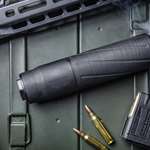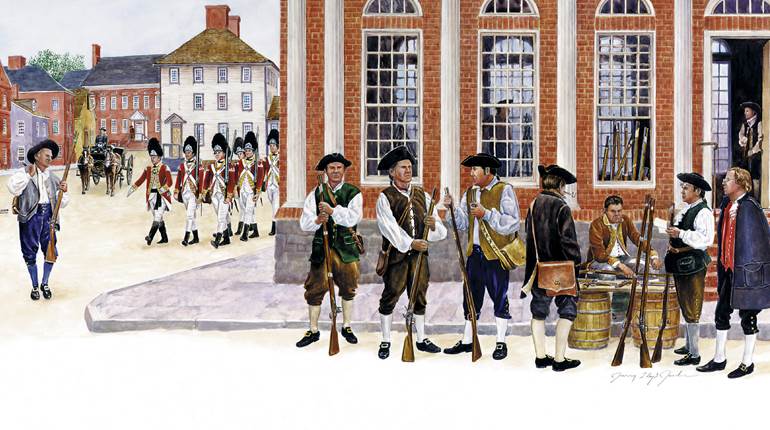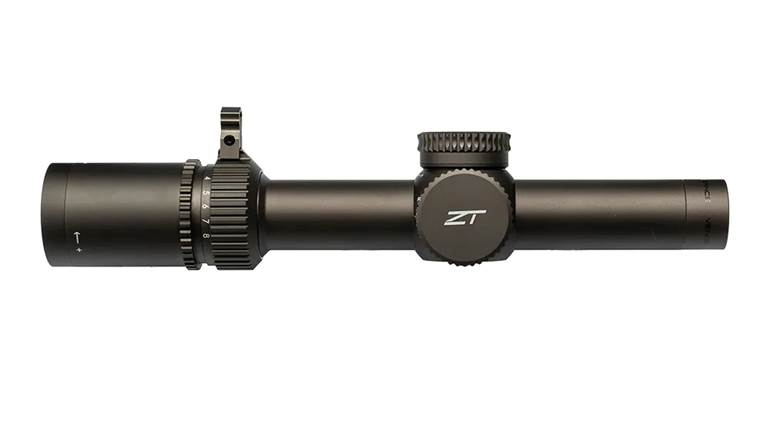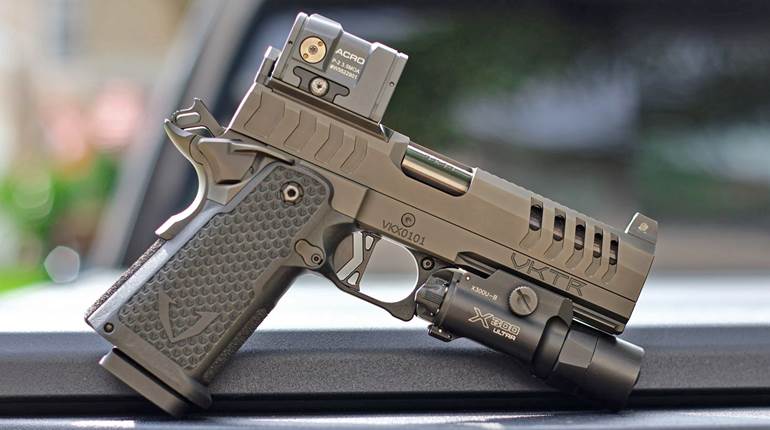
Originally published in American Rifleman, March 1989.
The handgun ban in Maryland, the campaign against semi-automatic arms in California and restrictive pistol legislation in the Chicago suburbs make it seem sometimes that the anti-gunners are everywhere on the march.
Yet there is a wooden stake poised over the heart of the firearms prohibition movement, one that its leaders recognize—and fear.
Women, traditionally the foot soldiers of the anti-gun movement, are taking a fresh look at gun ownership. Realizing that the police can't protect them and that politicians won't protect them, an estimated 12 million women bought side-arms during 1986, voting in the most tangible way possible to take responsibility for their own security.
This new interest in firearms offers an opportunity and poses some problems for an industry that historically has marketed its products primarily to men. The gun industry, from the local dealer to the largest manufacturer, is largely made up of men who have made careers selling guns to other men. Changing that requires an answer to Freud's eternal question, "What do women want?"
Not content to guess, Smith & Wesson set out to find out. Its motives weren't purely scientific. The old-line Massachusetts firm has had to fight hard to hold its traditional dominance in the police market during the great shift from .38 Spl. and .357 Mag. revolvers to 9 mm autoloaders. Its civilian revolver sales are under terrific pressure from Brazilian makers Rossi and Taurus, as well as smaller U.S. firms like Charter Arms and Dan Wesson.
There simply are too many manufacturers for a shrinking or stagnant market—the industry needs to find new markets to survive and prosper.
With that in mind, S&W studied patterns of gun ownership. It found that about 29% of men were interested in owning a gun, but that 28% already owned. Obviously, gun owners can and do buy more guns, but it was apparent that there was no potential Eldorado of new customers among men.
Among women, however, the story was entirely different. While 19% of women were interested in owning a gun, only 9% had already acquired one. This meant a huge untapped market open to a manufacturer smart enough to pursue it.
It's easy enough to decide to sell guns to women, but not so easy to decide how to sell to them, especially when you've been selling primarily to men since the 1850s. To find out what women want and how to sell to them, S&W hired an outside firm to conduct focus groups.
The focus group is a well-proven marketing tool that brings a small group of potential purchasers together to examine a new product and react to it. In S&W's case, four groups, each of 10 women, were gathered in Orlando, Fla., and Nashville, Tenn. The Southeast was selected for the research because women in that region and in the West have more favorable attitudes toward gun ownership and because gun laws are not as restrictive as they are in the Northeast.
The women were subdivided into two types, "intenders" who didn't own a gun at present but who were receptive to the possibility, and "owners," women who owned guns themselves and whose husbands owned them.
Smith & Wesson made videotapes of the sessions available to the American Rifleman. Viewing them is a fascinating process that induces both comfort and caution.
For the NRA member, there is comfort in the fact that women chosen from a variety of age groups, educational levels and social classes understand what NRA has been saying—that the police and criminal justice system in this nation simply cannot protect everyone all the time, and that women have the responsibility and the right to provide for their own security. Further, while safety is a concern, especially among mothers of small children, women have not bought the anti-gun lie that everyday people are incapable of armed self-defense.
The cautionary note comes from the misinformation and even disinformation women receive as folklore passed on by friends and relatives or, more importantly, through the news and entertainment media. There is much to be done by NRA, the industry and by every gun owner to get basic information to women about what guns can do, how they work and how they can be used effectively.
The part played by NRA members and other gun owners was graphically illustrated by the different responses of the intender and owner groups. The owners, especially those whose husbands, boyfriends or relatives were NRA members, were much more aware of the types of guns, proper handling techniques and the laws governing ownership and carrying.
A stark illustration came in the Orlando sessions. When pistols were passed out to the intender group, the result was an immediate orgy of snapping that could have put a whole NRA Training Counselor workshop into a swoon. When the owner group received theirs, there was much checking of cylinders and slides, and no one pulled a trigger until told to. Mind you, these women weren't classified competitors or certified instructors— they were women whose husbands or fathers or boyfriends had simply taken a few minutes for basic instruction, in some cases decades earlier.
The owners also were far more aware of the laws governing gun ownership and carrying. This was especially apparent in the Orlando sessions, where the intenders were convinced that Florida's new concealed carry law allows anyone to carry any gun anywhere, anytime, no questions asked.
That, of course, is not the case, but anyone who read the Miami Herald's overheated editorializing on the subject could hardly be blamed for the misunderstanding.
Several of the owner women knew people who had used guns against criminals, and some had done so themselves, including one doughty Nashville resident who returned fire with her .22 revolver after a group of young hoodlums started blasting at her door with a .44 Mag.— the criminals ran. Others had been run off the highway by would-be attackers, and had sent them packing by pointing a pistol.
Protection was overwhelmingly cited as the reason for pistol ownership, with the owners vaguely aware of competition, plinking and hunting as other purposes. Several of the Orlando owners mentioned protection from snakes—a regional peculiarity. Stopping power was a big concern of both intender and owner groups, and all the women seemed skeptical of the .22 Long Rifle as a defense round. The owners, especially, liked the moral effect of "a big hole in the end of the barrel."
It will come as a surprise to the hardcore pistolero who regards a .454 Casull or the Desert Eagle as the perfect carrying gun, but women like their sidearms small and light. When asked to describe the perfect gun, one said "one that fits my purse."
We who live and breathe guns have become used to the idea of women using standard arms—Ruby Fox winning national titles at Camp Perry with a .45, women posting high scores at the Bianchi Cup with bull-barrelled, optic-sighted revolvers or dauntless huntresses downing African game with SSK's "hand cannons."
But to women unfamiliar with guns, the idea of different pistols for women and men seems as natural as different bicycles or golf clubs. They were perfectly comfortable with the idea that a woman's gun can and perhaps should be a different size, shape or even color than a man's.
They wanted a gun relatively small in size and light in weight, though not so small and light as to be toylike. They wanted a gun that would be easy to grip securely, because they anticipated sweaty palms when facing a criminal. Finally, while many didn't know the term "recoil," they understood the phenomenon, and wanted as little of it as possible.
Finally, safety was a major concern for the mothers in all groups. All seemed to operate on the assumption that kids eventually will play with guns, and that it is the responsibility of adults to make that as difficult as possible by storing guns securely and by selecting guns that are difficult for small children to operate.
Smith & Wesson, of course, was interested not only in what guns to make for women, but how to market those guns. The women in the focus groups showed a remarkable confidence in gun-store personnel as sources of reliable information about firearms, a reassuring note in light of persistent efforts by the media to paint gun dealers as armorers to the drug trade and purveyors of assault weaponry to sociopaths.
They also expected to find information about guns in magazines like Consumer Reports and in public libraries. Only the owner groups seemed aware of the existence of gun magazines.
Both groups showed great interest in training courses, with the intenders expressing the belief that courses were offered by police departments, a belief that would lead to disappointment in certain jurisdictions! Both intenders and owners said that training provided through a gunstore would help that store sell them guns, with one participant adding that training courses would "help improve a store's image." Some thought that female instructors would make the training more appealing, while one asked the interesting question, "They taught us archery in high school, why not gun safety?"
It seems obvious that training courses for women could be lucrative for gun-stores with range facilities and a source of new members for NRA-affiliated clubs.
There was a considerable divergence of opinion between owners and intenders on the subject of concealed carry. The intenders saw the pistol strictly as a tool of home defense, while the owners were much more comfortable with the concept of concealed carrying for licensed civilians, though most felt no pressing current need for a carry permit. The desire for a small gun seemed more related to comfort than to ease of concealment for both groups.
The most interesting part of each session for the avid gun fancier was the examination of guns by the focus group. The women were issued questionnaires eliciting their reactions to various characteristics of 26 different revolvers and autoloaders that were passed around the table. The guns included a variety of .38 and .357 revolvers, the 422.22 automatic, several 9 mm autos and the .22 Escort made by S&W 1970-73.
The reactions of the group members were endlessly varied and interesting, ranging from the cool appraisal of a woman whose husband was an NRA Life Member to the obvious nervousness of one who began the session by saying "I’m against guns—I think."
It quickly became apparent that the intenders, and many of the owners, were utterly baffled by the operation of the 9 mm autoloaders. Self-loader fans might argue that simple hand-cycling and dry-firing doesn't make for a fair comparison, but it seems obvious that patient and thorough orientation, preferably with dummy ammunition, is necessary to familiarize novices with the operation of autoloading pistols. The women especially had problems with the slide stop of the big 9 mms; most found it impossible to depress the stop with the thumb of the trigger hand without taking a contorted grip and retracting the slide slightly with the free hand.
Considering their positive attitude toward licensed concealed carry, it was interesting that the owners, like the intenders, showed little interest in bobbed-or shrouded-hammer revolvers. Perhaps it takes a few snags in the pocket or purse to develop an appreciation of those features.
When you think back on the checkered history of color-anodized and decorated guns intended for women, it is not surprising that opinions were all over the lot in relation to the looks of firearms. While one participant said "I don't like the looks of a big black gun," others were blase about feminine touches. "If I wanted to display it, it would be one thing," one said, "but if it's to use, it's like decorating a trash can."
That's a sentiment to bring a tear to the eye of engravers, importers of ivory grips and electroless nickel-platers, but it seems typical of the no-nonsense utilitarian view women have of their guns.
Smith & Wesson has taken the lessons it learned from these focus groups to heart and has applied them to its LadySmith program (see sidebar below).
What lessons are there for NRA members?
• Take the women close to you shooting, teaching proper gun handling techniques. Some relatively elderly women in the groups had vivid memories of going shooting with their fathers decades ago, and the lessons they learned then stayed with them.
• Make an effort to include women in your club's events, taking into account their needs and interests. Reach out to women's groups in your community who might cosponsor firearms training for their members.
• When discussing guns with women, don't try to demonstrate your encyclopedic knowledge of firearms from the Chinese alchemists forward. Answer the questions they want answered, no matter how basic.
• When helping a woman select a gun, take into account her needs, not your personal preconceptions or pet ballistic theories. A woman needs to be comfortable with a gun, whether or not it fits your ideal of stopping power, magazine capacity and penetration.
• Take every opportunity to refute the lies of the anti-gunners and the misinformation of the news media. Many women have erroneous notions about guns simply because no one has ever taken the time to provide the correct information.
The war against the firearms prohibitionists likely will go on forever. But an increasing number of women gun owners on our side could tip the balance in favor of freedom. Smith & Wesson has done its part—now go do yours!
Smith & Wesson LadySmiths
For Smith & Wesson, the LadySmith program is something of a case of new wine in old bottles. The name "Lady-smith" was informally applied to the M-framed .22 Hand Ejector revolver introduced in 1902, a graceful little gun that since has become a sought-after collector's item.
The new LadySmith (note the capital S) can be thought of as four variants of the J-framed Chiefs Special, the five-shot .38 Spl. concealment gun that has, along with the Colt Detective Special, become the prototype of the "snub-nosed" revolver.
The LadySmith comes in two finishes, a smooth blue and a new frosted stainless that has something of the look of electro-less nickel. Each finish can be had in a T-barrelled gun with smooth rosewood grips or a 3" heavy-barrelled gun with finger-grooved "combat" grips. Both grip sizes are cut smaller for women, and will seem rather small to the average-sized man. All LadySmiths have fixed sights.
While focus groups (see accompanying story) didn't care for shrouded or bobbed hammers, S&W did make one concession to licensed concealed carriers and policewomen; it beveled the hammer, thumb-piece and the smooth-faced trigger to help prevent snagging.
The trigger pull was adjusted for shorter female fingers, with a resulting single-action pull on the sample guns of around 2 ½ lbs. and a double-action pull of about 12 ½ lbs. This compared to 3¼ and 14 lbs., respectively, on a standard Model 36 tested here.
The LadySmith models will be sold with a hard plastic case which has a generic handbag shape not immediately recognizable as a gun case. Us handle is perforated for use of a standard padlock to keep inquisitive children out.
As a part of the LadySmith program, Smith & Wesson is establishing a toll-free information fine that will allow women to ask questions about firearms regulations, where to buy a gun, where to get training, all of a knowledgeable female expert. The telephone service will be backed up by a wide range of literature on similar topics, with emphasis on acquainting a woman with dealers and training personnel in her own area.
The sample revolvers were shown to a selection of female NRA employees, who seemed to like the marketing concept and the woman-sized grips, but also, no doubt under the influence of seeing dozens of 9 mms, ,45s and .44 Mags, pass through these halls, had their questions about stopping power and ammunition capacity.
Regardless, Smith & Wesson has taken a fresh new approach to selling an established product, and that is bigger news than many a so-called product introduction we see these days.
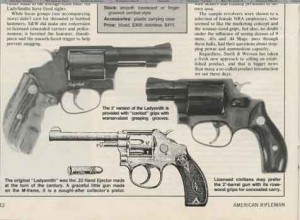












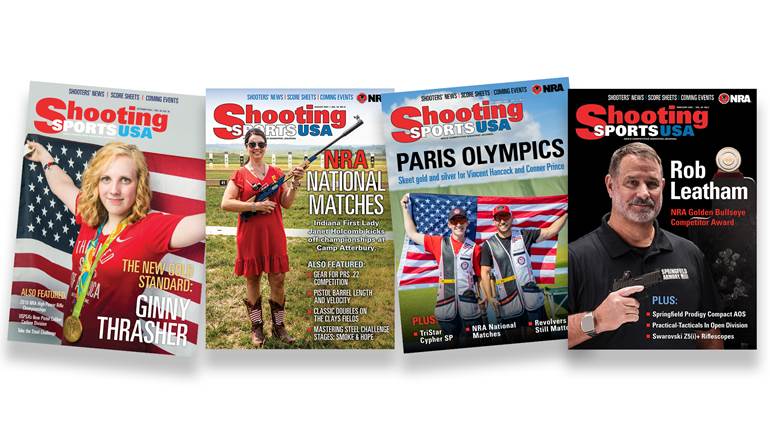
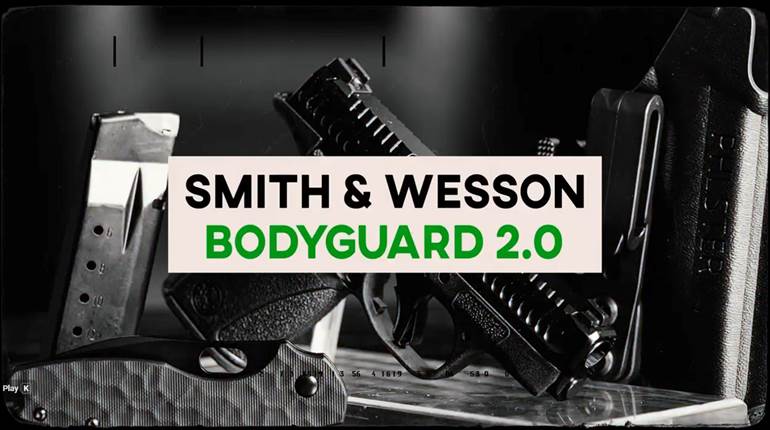
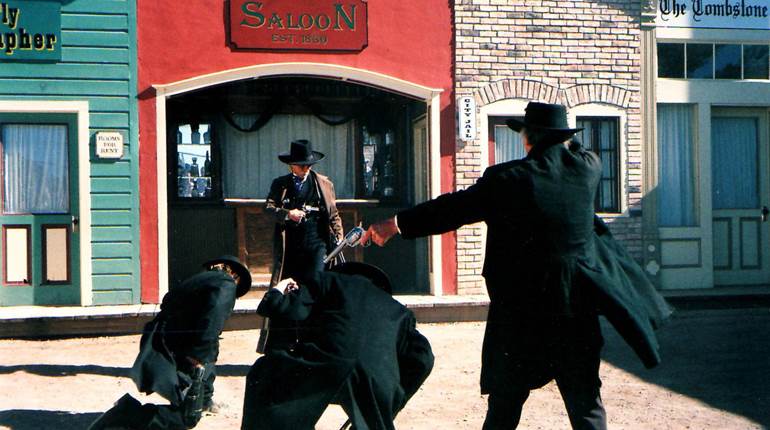
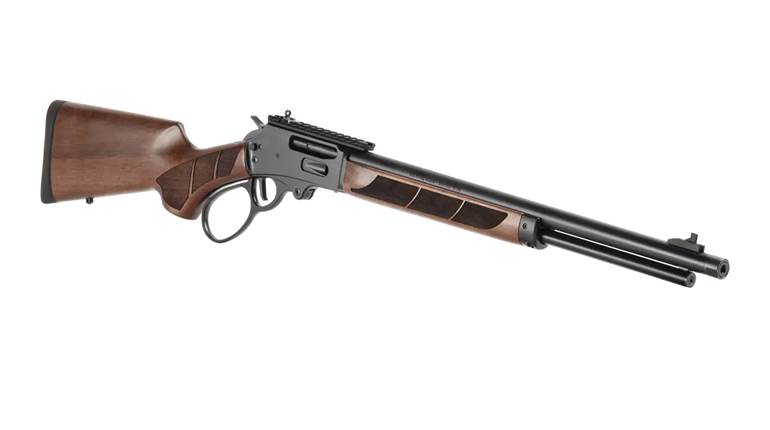


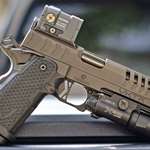

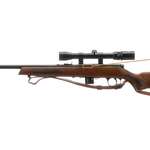

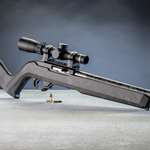
![Winchester Comm[94]](/media/1mleusmd/winchester-comm-94.jpg?anchor=center&mode=crop&width=770&height=430&rnd=134090756537800000&quality=60)
![Winchester Comm[94]](/media/1mleusmd/winchester-comm-94.jpg?anchor=center&mode=crop&width=150&height=150&rnd=134090756537800000&quality=60)

